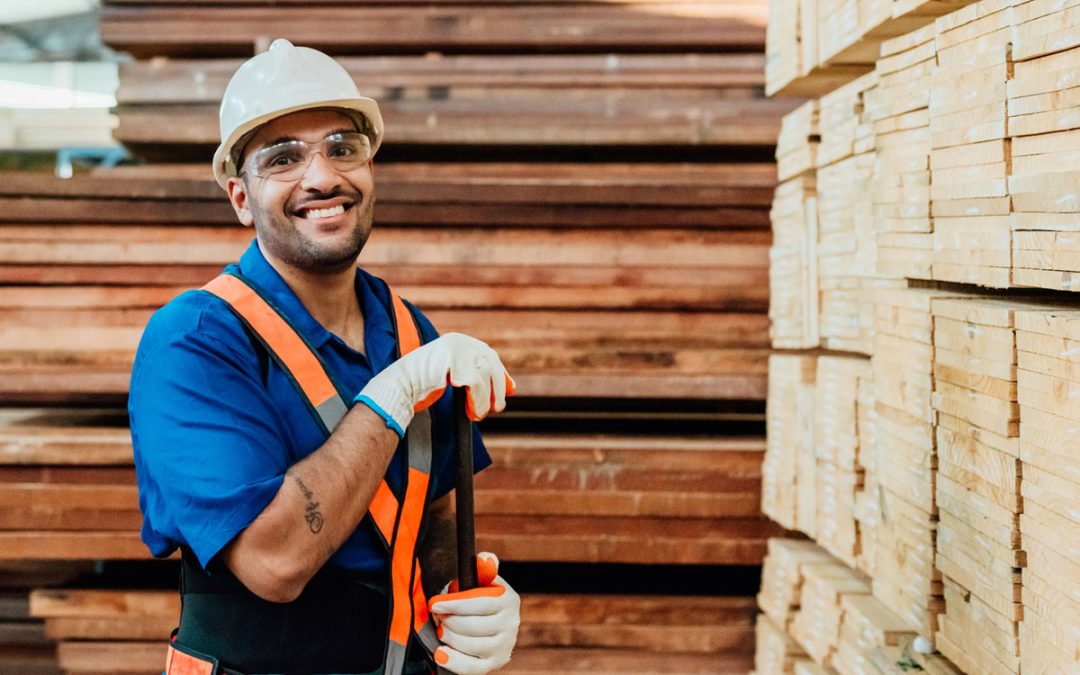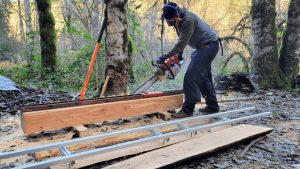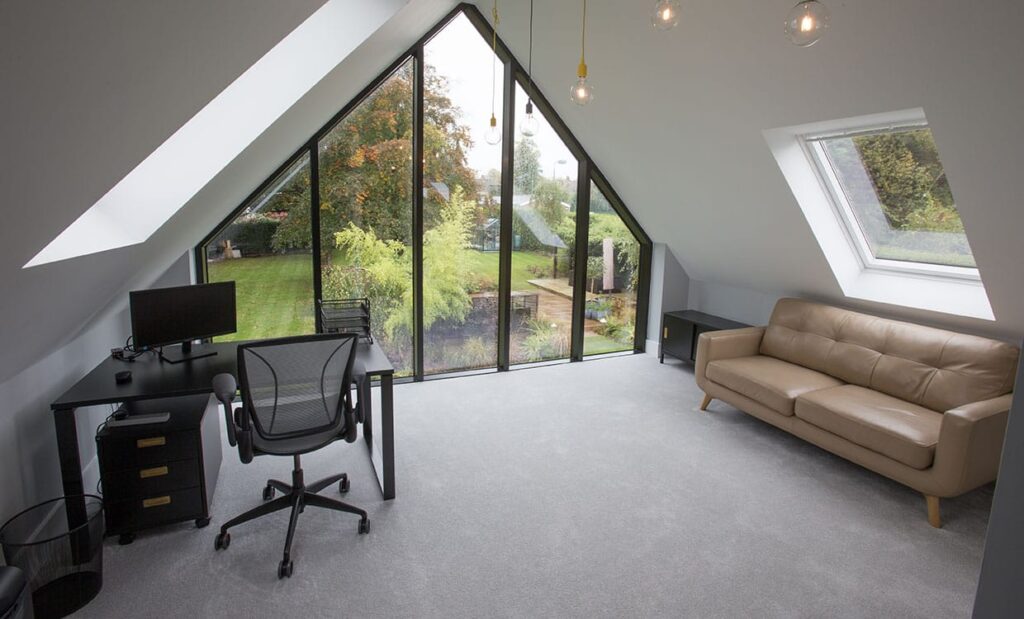Real Estate
Breaking Down the Costs of Homeownership

Breaking Down the Costs of Homeownership
Homeownership is often seen as a symbol of success, a life milestone, and an investment in the future. The sense of security and belonging that comes with having a place to call your own is unparalleled. However, owning a home is not just about the initial purchase price. It entails a multitude of costs that extend far beyond the down payment. In this comprehensive guide, we will break down the various expenses associated with owning a home, ensuring you are well-prepared for the journey of homeownership.
Beyond the Purchase Price
When most people think of the cost of homeownership, they typically focus on the down payment – that substantial initial financial hurdle. The down payment, usually a percentage of the home’s purchase price, is your initial investment in the property. While the down payment is a significant cost, it’s only one piece of the homeownership puzzle.
- Down Payment: Your down payment is the initial lump sum you need to secure your home. It’s typically a percentage of the property’s purchase price. For instance, a conventional mortgage often requires a 20% down payment. This can be a substantial sum and a major factor influencing your mortgage options and future financial stability.
- Monthly Mortgage Payments: The mortgage payment is a major ongoing expense. It consists of both principal and interest. The principal payment contributes to paying down the loan, while the interest payment is essentially the cost of borrowing money. As time passes, the balance between these two elements shifts, with more of your payment going toward the principal.
- Property Taxes: Property taxes are an ongoing financial obligation. The amount you owe depends on the assessed value of your property and the tax rates in your area. Property taxes vary greatly across the country, so it’s essential to understand the local tax structure when considering homeownership.
- Homeowners Insurance: Protecting your investment is vital. Homeowners insurance provides coverage for property damage, personal liability, and more. Rates depend on the property’s value, location, and the level of coverage you choose.
- Maintenance and Repairs: Homes require ongoing maintenance to stay in good condition. This includes routine tasks like HVAC system checks, plumbing repairs, and keeping the exterior in good repair. Regular maintenance helps prevent larger, more costly repairs down the road.
Ongoing Homeownership Costs
| Expense | Frequency | Average Cost |
|---|---|---|
| Utilities | Monthly | Varies |
| Homeowners Association | Monthly/Annually | Varies |
| Lawn and Garden Care | Seasonal | Varies |
| Pest Control | As needed | Varies |
| Renovations and Upgrades | Periodic | Varies |
Understanding Ongoing Costs
Beyond the initial purchase price, homeowners must budget for a range of ongoing expenses. These costs can vary widely depending on your location, the size and condition of your property, and your lifestyle. Here are some of the ongoing costs associated with homeownership:
- Utilities: Utilities are a significant monthly expense that includes electricity, water, gas, and internet. These costs can vary based on consumption, local rates, and the efficiency of your home’s systems. Taking steps to make your home more energy-efficient can help reduce utility costs.
- Homeowners Association Fees: If your property is part of a homeowners association (HOA), you’ll have either monthly or annual fees. These fees cover communal expenses such as landscaping, security, and the maintenance of shared amenities like swimming pools or gyms. HOA fees can vary widely, and it’s important to understand what they cover before purchasing a property in an HOA.
- Lawn and Garden Care: If your property includes a yard or garden, you’ll need to budget for seasonal maintenance. This may include lawn mowing, gardening, leaf removal, and landscaping. The cost will depend on the size of your property and the level of care you desire.
- Pest Control: Pest problems can occasionally arise, requiring professional extermination services. The cost of pest control depends on the severity of the issue and the services needed.
- Renovations and Upgrades: Over time, you may wish to make renovations or upgrades to your home. These periodic expenses can vary widely depending on the scale of the project. Whether it’s updating a bathroom, adding a new room, or investing in a kitchen remodel, it’s important to plan and budget for these costs.
Image by: https://www.bizjournals.com/
Unexpected Expenses
While many of the costs of homeownership are foreseeable and regular, there are also unexpected expenses that can arise. Being prepared for these surprises is essential for responsible homeownership:
- Emergency Repairs: Major issues like roof leaks, plumbing problems, or electrical issues can be costly and unexpected. It’s important to have an emergency fund to cover these unexpected repairs to ensure that your home remains safe and habitable.
- Property Assessments: Sometimes, the homeowners’ association may levy special assessments to fund large community projects. These can be unexpected and can impact your finances.
- Property Value Fluctuations: The real estate market is subject to fluctuations. The value of your property may increase or decrease due to market conditions, impacting your equity.
- Natural Disasters: Damage from natural disasters, such as hurricanes, wildfires, or floods, may not be fully covered by standard homeowners insurance. Preparing for potential natural disasters and considering additional coverage may be necessary in certain regions.
Preparing for Homeownership Costs
- Budget Wisely: Creating a comprehensive budget is one of the first steps toward successful homeownership. Your budget should include all the costs associated with owning a home, including mortgage payments, property taxes, insurance, and ongoing expenses.
- Emergency Fund: Building an emergency fund is crucial for unexpected repairs and expenses. Having savings set aside for unforeseen circumstances will provide peace of mind and financial stability.
- Regular Maintenance: Invest in regular maintenance to prevent larger repair bills. Regular inspections and maintenance of your home’s systems, such as HVAC, plumbing, and roofing, can extend their lifespan and reduce the likelihood of costly repairs.
- Insurance Coverage: Review your homeowners insurance to ensure it adequately covers your needs. Consider additional coverage if you live in an area prone to specific risks, such as floods or earthquakes.
- Market Trends: Stay informed about local real estate market trends to understand property value fluctuations. Understanding the market can help you make informed decisions about when to buy, sell, or make renovations.
Conclusion
Homeownership is a rewarding investment, but it comes with ongoing costs beyond the purchase price. Understanding these expenses, budgeting wisely, and preparing for unexpected costs are key to successful and sustainable homeownership. By considering all aspects of homeownership costs, you can enjoy the benefits of owning your own home while maintaining financial stability and peace of mind.
Real Estate
Professional Tactics to Scale Vacation Rental Revenue

Introduction
In today’s competitive hospitality market, growing a Vacation Rental Business requires more than just listing properties online. Property owners and managers need smart strategies to maximize occupancy, increase revenue, and deliver exceptional experiences. Scaling revenue is not only about pricing but also about understanding guest behavior, marketing effectively, and streamlining operations.
Understand Your Target Guests
One of the most important steps to growing your vacation rental revenue is understanding the type of guests you want to attract. When you know who your guests are, you can design your property, write better listings, and set prices that match their expectations.
Your guests may include families, couples, business travelers, remote workers, solo travelers, or large groups. Each group has different needs. Families may want a safe property with extra beds, while remote workers look for strong Wi-Fi and a quiet space. When your rental meets their needs, guests feel more comfortable and are more likely to book, return, and leave positive reviews.
Optimize Your Pricing Strategy
A successful pricing strategy is the foundation of high vacation rental revenue. Fixed prices rarely work because demand changes throughout the year. Instead, you should adjust your rates based on seasons, weekends, holidays, local events, and last-minute gaps.
Here are key pricing tactics:
- Use dynamic pricing tools to adjust rates automatically.
- Increase prices during holidays, festivals, and local events.
- Offer discounts for extended stays to attract long-term guests.
- Add small fees for extra services like early check-in or late check-out.
- Check competitor pricing to stay competitive without undercharging.
Smart pricing helps you earn more from each booking while keeping your property attractive to guests.
Optimize Your Pricing Strategy
Pricing is the cornerstone of any profitable vacation rental. Smart pricing can significantly increase occupancy while maximizing revenue. Understanding demand patterns, seasonality, and local events is essential to get your rates just right.
1. Use Dynamic Pricing Tools
Dynamic pricing software adjusts rental rates based on demand, competition, and seasonal trends. These tools help property owners stay competitive while optimizing income without manual guesswork.
2. Analyze Competitor Rates
Regularly monitoring similar properties in your area allows you to set competitive rates. Pricing too high can lead to vacancies, while too low undervalues your property. Balance is key.
3. Offer Flexible Stay Options
Offering weekly or monthly discounts can attract longer-term guests. Flexible minimum-night stays appeal to a broader audience and can increase occupancy during slower periods.
Enhance Guest Communication
Effective Guest Communication is more than answering inquiries. It’s about creating memorable experiences that encourage repeat bookings and positive reviews. A streamlined communication strategy ensures guests feel valued and informed throughout their stay.
1. Automate Messaging for Efficiency
Automated messaging tools allow you to send check-in instructions, reminders, and thank-you notes without manually responding every time. This maintains professionalism and improves guest satisfaction.
2. Personalize Guest Interactions
Personal touches, such as addressing guests by name or offering local recommendations, build rapport. Personalized communication increases the likelihood of positive reviews and repeat visits.
3. Respond Promptly to Inquiries
Timely responses to booking requests and questions can make or break a guest’s decision. Fast communication signals reliability and encourages bookings over competitors who are slow to reply.
Invest in Property Presentation
The way your property is presented online heavily influences booking decisions. High-quality visuals, detailed descriptions, and appealing amenities can significantly boost revenue.
1. Professional Photography Matters
Invest in professional photos showcasing the best features of your property. Bright, clear images highlight space, cleanliness, and ambiance, encouraging more bookings.
2. Optimize Listings for Search Engines
Include relevant keywords, property details, and amenities in your listing. SEO-friendly descriptions help your property appear in more searches and attract potential guests actively looking to book.
3. Highlight Unique Amenities
Showcasing unique offerings, like a hot tub, pool, or pet-friendly accommodations, differentiates your property. Highlight these features in your listing to justify higher rates and attract niche travelers.
Invest in Property Presentation
The way your property is presented online heavily influences booking decisions. High-quality visuals, detailed descriptions, and appealing amenities can significantly boost revenue.
1. Professional Photography Matters
Invest in professional photos showcasing the best features of your property. Bright, clear images highlight space, cleanliness, and ambiance, encouraging more bookings.
2. Optimize Listings for Search Engines
Include relevant keywords, property details, and amenities in your listing. SEO-friendly descriptions help your property appear in more searches and attract potential guests actively looking to book.
3. Highlight Unique Amenities
Showcasing unique offerings, like a hot tub, pool, or pet-friendly accommodations, differentiates your property. Highlight these features in your listing to justify higher rates and attract niche travelers.
Invest in Property Presentation
The way your property is presented online heavily influences booking decisions. High-quality visuals, detailed descriptions, and appealing amenities can significantly boost revenue.
1. Professional Photography Matters
Invest in professional photos showcasing the best features of your property. Bright, clear images highlight space, cleanliness, and ambiance, encouraging more bookings.
2. Optimize Listings for Search Engines
Include relevant keywords, property details, and amenities in your listing. SEO-friendly descriptions help your property appear in more searches and attract potential guests actively looking to book.
3. Highlight Unique Amenities
Showcasing unique offerings, like a hot tub, pool, or pet-friendly accommodations, differentiates your property. Highlight these features in your listing to justify higher rates and attract niche travelers.
Conclusion
Scaling a vacation rental business requires a combination of strategic pricing, effective guest communication, and polished property presentation. By investing in these areas, property owners can increase revenue, attract more bookings, and build a reputation for exceptional stays. Consistency, personalization, and optimization are the keys to long-term success in this competitive market.
FAQs
Q1: How can I increase occupancy in my vacation rental?
A: Focus on dynamic pricing, seasonal promotions, and flexible stay options. Optimizing your online listing and improving guest communication also encourages bookings.
Q2: What is the best way to handle guest complaints?
A: Address complaints promptly and professionally. Listen actively, offer solutions, and ensure the guest feels valued. Positive resolutions can turn negative experiences into positive reviews.
Q3: Should I manage my vacation rental myself or hire a manager?
A: If you have multiple properties or limited time, hiring a property manager can save effort and improve guest satisfaction. Otherwise, managing it yourself allows for more control and personalization.
Real Estate
Modern Lumber Skills Shaping High-Precision Material Planning

Introduction
In today’s construction and woodworking industries, precision is more important than ever. Modern lumber skills are transforming the way materials are planned, measured, and utilized. From small-scale woodworking projects to large construction sites, the ability to plan materials accurately reduces waste, saves costs, and ensures higher-quality results. High-precision material planning is no longer just a skill—it is a necessity for professionals who want to stay competitive. This article explores the role of modern lumber skills in shaping efficient, accurate, and innovative material planning practices.
The Evolution of Lumber Skills
Lumber skills have come a long way from traditional carpentry techniques. In the past, woodworkers relied heavily on manual measurements and experience to plan materials. While craftsmanship was impressive, there were limitations in accuracy and efficiency.
With modern techniques and technologies, the focus has shifted toward precision. Professionals now combine traditional knowledge with digital tools, advanced machinery, and innovative planning methods. These modern lumber skills allow for better estimation of material requirements, accurate cutting, and optimized project workflows.
Rise of Modern Lumber Skills
As the construction industry grows and projects become more complex, the demand for modern lumber skills has increased. Builders need more precise planning to manage materials efficiently and reduce waste. Traditional methods of estimating and cutting lumber are no longer enough. Modern skills, combined with technology and training, allow workers and contractors to plan materials accurately, making construction projects faster, safer, and more cost-effective. This rise in skill demand reflects the need for higher standards in today’s building practices.
Why High-Precision Material Planning Matters
High-precision material planning is essential for several reasons. First, it reduces waste. Accurate measurements mean fewer mistakes, fewer discarded materials, and a smaller environmental footprint. Second, it saves money. By planning materials efficiently, contractors and woodworkers minimize unnecessary purchases, reducing project costs. Third, it improves project timelines. Proper planning ensures that materials are available when needed, preventing delays.
In addition, precision planning enhances the final quality of the project. Structures, furniture, and wooden components fit perfectly, resulting in better aesthetics and durability. Modern lumber skills make this level of accuracy possible.
Benefits of Modern Lumber Skills
Modern lumber skills bring many benefits to construction projects. They help reduce waste by ensuring that materials are cut and used accurately. These skills also save time, as workers can plan and execute tasks more efficiently. Contractors can better predict costs, making budgeting easier and more reliable. Improved material planning also enhances project quality, as the right materials are available when needed. Overall, these skills lead to smoother workflows, lower costs, and stronger, more precise construction results.
Role of Modern Lumber Skills
The main role of modern lumber skills is to improve the accuracy and efficiency of material planning. Skilled workers use knowledge of wood types, cutting techniques, and measurement methods to plan projects carefully. They work with estimators and project managers to ensure the right materials are ordered and used correctly. Modern skills also involve using tools and software to calculate waste, compare cost options, and organize supplies. Essentially, these skills act as a bridge between planning and execution, helping construction teams achieve high-precision results.
The Importance of Precision in Lumber Work
High-precision material planning is not just for big factories. Even small woodworking projects benefit when measurements are accurate and planning is thorough. Precision helps in cutting the exact amount of wood needed, reducing leftover scraps and mistakes. Modern lumber skills teach how to measure carefully, select the right type of wood, and plan each step before starting a project. With these methods, craftsmen can avoid wasting expensive materials while also improving the quality of their work.
How Technology Supports Lumber Skills
Technology has played a huge role in modern woodworking. Tools like computer-aided design (CAD) software allow woodworkers to plan every cut and angle digitally before touching the wood. Laser measuring tools, digital calipers, and CNC machines make it easier to achieve exact measurements and shapes. These tools work hand-in-hand with traditional skills, allowing craftsmen to be faster, more accurate, and more efficient. Even beginners can now produce professional-level results with guidance from technology.
Reducing Waste Through Smart Planning
One of the biggest advantages of modern lumber skills is waste reduction. By planning projects carefully, woodworkers can use the full potential of each piece of wood. This not only saves money but also helps the environment by reducing discarded materials. High-precision planning ensures that even oddly shaped or smaller pieces of wood can be used creatively, turning what would be scraps into functional components of a project. Sustainable woodworking starts with smart planning and exact measurements.
Tools and Technologies Driving Modern Lumber Skills
Technology plays a critical role in modern lumber skills. Computer-aided design (CAD) software allows woodworkers to plan materials digitally, visualize projects, and simulate cuts before starting work. These tools help identify potential errors and optimize material usage.
Additionally, advanced machinery like CNC routers, laser cutters, and automated saws allow for precise cutting based on digital plans. These machines reduce human error and ensure consistent results across projects.
Mobile applications and project management software also support high-precision material planning by tracking inventory, estimating quantities, and scheduling deliveries. Together, these tools make modern lumber skills more efficient, accurate, and scalable.
Training and Skill Development

Image by: Yandex.com
Acquiring modern lumber skills requires a combination of education, hands-on experience, and familiarity with digital tools. Many vocational schools, technical programs, and workshops now offer training that combines traditional woodworking with technology-driven practices.
On-the-job training is equally important. Professionals learn how to interpret digital plans, operate advanced machinery, and make real-time adjustments to materials. Continuous skill development ensures that woodworkers remain competitive and capable of handling complex projects.
Real-World Applications
Modern lumber skills and high-precision material planning have applications in many industries. In residential construction, accurate planning reduces wasted wood and ensures that components like flooring, cabinetry, and furniture fit perfectly.
In commercial construction, precision is crucial for larger projects with tight timelines and budgets. Architects and contractors rely on detailed material plans to coordinate teams, schedule deliveries, and avoid costly mistakes.
Furniture making is another area where modern lumber skills shine. Precision cutting and planning allow designers to create intricate pieces with minimal waste, maintaining both quality and efficiency.
Environmental Benefits
High-precision material planning also supports sustainability. By reducing material waste, construction projects become more environmentally friendly. Fewer discarded materials mean less strain on landfills and lower resource consumption.
Modern lumber skills encourage recycling and repurposing leftover wood, further contributing to sustainable practices. Professionals who adopt these skills not only improve project efficiency but also demonstrate environmental responsibility, which is increasingly important to clients and communities.
Challenges in Adopting Modern Lumber Skills
Despite their importance, modern lumber skills come with challenges. Workers need proper training to use new tools and technologies effectively. Mistakes in measurement or planning can still occur, causing delays or added costs.
Coordinating with suppliers and adapting to material price changes can also be difficult. Additionally, some teams may resist adopting new methods, relying on older techniques instead. Overcoming these challenges requires continuous learning, clear communication, and careful supervision.While modern lumber skills offer significant advantages, adoption can present challenges. First, there is a learning curve associated with new technologies. Professionals must invest time and effort to become proficient with digital tools and advanced machinery.
Second, the cost of equipment can be high. CNC machines, laser cutters, and software licenses require substantial investment. However, the long-term benefits in efficiency, waste reduction, and project quality often outweigh initial costs. Finally, integrating modern practices into traditional workflows may require organizational changes. Teams need to adapt to digital planning methods and embrace new approaches to material management.
The Future of High-Precision Lumber Planning
The future of modern lumber skills looks promising as technology and training continue to evolve. Digital tools, software, and AI will make material planning faster and more precise. Workers will be able to simulate projects, predict costs, and reduce waste even further. As construction projects grow in complexity, these skills will become essential for achieving efficiency and quality. In the coming years, modern lumber skills will not only save time and money but also help builders meet higher standards of precision and sustainability.
The future of lumber skills and material planning is promising. Advancements in artificial intelligence, robotics, and automation are expected to further enhance precision and efficiency. AI-powered design tools could optimize material usage automatically, while robots and automated saws could perform complex cuts with minimal human intervention.
Sustainable practices will continue to grow in importance. Modern lumber skills will increasingly focus on maximizing material efficiency, minimizing waste, and supporting environmentally friendly construction. Professionals who adopt these practices will be better positioned for success in a competitive and evolving industry.
Conclusion
Modern lumber skills are transforming the way materials are planned, cut, and used across construction, woodworking, and design industries. By combining traditional craftsmanship with technology-driven tools, professionals can achieve high-precision material planning that reduces waste, saves money, and improves project quality.
The evolution from manual measurements to digital planning, CNC machinery, and AI-driven tools demonstrates how the industry is embracing efficiency and innovation. With proper training, investment in technology, and a focus on sustainability, modern lumber skills will continue to shape high-quality, cost-effective, and environmentally responsible projects for years to come.
For professionals and businesses, embracing these skills is not just a choice—it is a necessity to remain competitive, deliver superior results, and contribute to a sustainable future.
Business
Bespoke Loft Conversion and Design Services in the UK | Tacman

Introduction
Transform your unused attic space into a beautiful, functional area with expert Loft Conversion services from Tacman. Whether you need an extra bedroom, a home office, or a creative studio, a well-designed loft conversion adds both space and value to your property. At Tacman, we specialise in delivering bespoke loft conversions that blend innovative design, expert craftsmanship, and energy efficiency turning your vision into reality.
Loft conversions have become one of the most popular ways to expand living space in UK homes. Many homeowners are looking for smart, stylish, and functional solutions to add bedrooms, offices, or entertainment areas without moving house. Tacman specializes in bespoke loft conversion and design services, offering tailored solutions to meet every homeowner’s needs. With a focus on creativity, quality craftsmanship, and attention to detail, Tacman helps transform underused lofts into beautiful, practical living spaces. This guide will explore the benefits, process, and tips for choosing the right loft conversion service in the UK.
Why Choose a Bespoke Loft Conversion
A bespoke loft conversion offers unique advantages compared to standard or pre-designed options:
- Tailored to Your Needs: Every home is different, and a bespoke service ensures the loft is designed specifically for your lifestyle. Whether you need a home office, an extra bedroom, or a family lounge, the design can reflect your requirements.
- Maximizes Space Efficiently: A well-planned loft conversion makes the most of every inch, including awkward corners and sloped ceilings, turning wasted areas into functional space.
- Enhances Property Value: A professionally designed loft conversion can significantly increase the value of your property, making it a smart investment for the future.
- High-Quality Craftsmanship: Bespoke services focus on superior materials, attention to detail, and finishes that match the rest of your home, giving a polished and premium feel.
- Creative and Modern Designs: With bespoke design, you can integrate unique features like skylights, built-in storage, and stylish layouts that suit your taste and personality.
Popular Types of Loft Conversions in the UK
When considering a loft conversion, there are several popular types to choose from:
- Dormer Loft Conversion: This is the most common type, ideal for adding headroom and floor space. Dormers can be customized to match the home’s style.
- Mansard Loft Conversion: Mansard conversions involve altering the roof structure to create a nearly vertical wall. This allows for maximum space and is ideal for larger lofts.
- Hip-to-Gable Loft Conversion: Popular for semi-detached homes, this conversion extends the roof to create a spacious loft area.
- Velux or Roof-Light Loft Conversion: A simpler and more cost-effective option, Velux conversions use skylights to brighten the loft while retaining the existing roof structure.
- Bespoke Hybrid Designs: Tacman also offers hybrid solutions, combining features from different conversion styles to create unique, functional spaces tailored to individual homes.
Maximise Space and Add Value to Your Home
A loft conversion is one of the most cost-effective ways to expand your living space without the need for a full extension. Our design and build team work closely with you to plan, design, and construct a conversion that perfectly complements your home’s style and structure. From initial consultation to completion, we ensure that every stage is handled with care and precision.
We offer a variety of loft conversion types, including dormer, hip-to-gable, Velux, and mansard conversions each tailored to suit your specific property and requirements. Our architects and designers make the most of every inch, creating light-filled, practical spaces that improve your home’s functionality and aesthetic appeal.
Expert Design and Construction
At Tacman, we combine design excellence with high-quality construction standards to deliver loft conversions that stand the test of time. Using modern building materials, smart insulation solutions, and energy-efficient designs, we ensure your new loft space is comfortable and compliant with all UK Building Regulations.
Our experienced builders handle all structural work, plumbing, and electrical installations, giving you a fully finished space ready for use. From planning permission to the final touches, Tacman manages the entire process so you can enjoy a stress-free experience.
Tailored Solutions for Every Home
Every home is unique, and so is every loft conversion. That’s why we take a bespoke approach customising each project to meet your lifestyle, budget, and aesthetic preferences. Whether you live in a modern townhouse or a traditional cottage, our team designs conversions that enhance both the interior and exterior of your property.
We focus on detail, efficiency, and communication at every stage, ensuring our clients are fully informed and involved throughout the process. With our skilled design and construction team, you can trust Tacman to create a space that is both practical and inspiring.
Why Choose Tacman for Your Loft Conversion Project
Choosing the right company for your loft conversion is crucial to achieving lasting results. With Tacman, you get a team dedicated to delivering quality, transparency, and innovation. Our extensive experience in home design and construction means we understand how to maximise your property’s potential while maintaining structural integrity and aesthetic value.
At Tacman, we’re passionate about helping homeowners transform unused spaces into comfortable, modern living areas. From concept to completion, we’re your trusted partner in creating loft conversions that elevate both lifestyle and property value.
The Loft Conversion Process
A professional loft conversion service like Tacman follows a structured process to ensure high-quality results:
- Initial Consultation: The process begins with a detailed consultation to understand your requirements, budget, and vision for the space.
- Design and Planning: Designers create a bespoke plan, including layout, materials, lighting, and storage solutions, while considering the structural aspects of your home.
- Planning Permission and Regulations: Tacman handles all planning applications, building regulations, and necessary approvals to ensure the conversion meets UK standards.
- Construction and Project Management: Experienced builders work efficiently to execute the design while minimizing disruption to your daily life. Project managers oversee timelines, materials, and workmanship.
- Finishing Touches: High-quality finishes, custom joinery, lighting, and décor are added to create a functional and aesthetically pleasing living space.
- Handover and Aftercare: The completed loft is handed over to the homeowner with guidance on maintenance and support for any post-construction questions.
Benefits of a Tacman Bespoke Loft Conversion
Choosing Tacman for your loft conversion comes with several key advantages:
- Custom Designs tailored to your lifestyle and property.
- Expert Craftsmanship ensuring durability and premium quality.
- Efficient Project Management to keep timelines and budgets on track.
- Compliance with UK Building Regulations to guarantee safety and legality.
- Creative Solutions to make the most of space, light, and aesthetics.
Tips for Planning Your Loft Conversion
Before starting your loft conversion, consider the following:
- Set a Realistic Budget: Factor in design, construction, planning permissions, and finishing costs to avoid surprises.
- Think About Purpose: Decide whether the loft will be a bedroom, office, gym, or multifunctional space to guide the design.
- Maximize Natural Light: Skylights, dormers, and roof windows can make the loft feel more open and welcoming.
- Consider Storage Solutions: Built-in wardrobes, shelves, and under-eaves storage make the most of available space.
- Hire a Trusted Professional: Working with experienced professionals ensures quality design, construction, and regulatory compliance.
Popular Features in Modern Loft Conversions
Modern loft conversions often include features to enhance comfort, functionality, and style:
- Skylights or roof windows for natural light.
- Built-in storage to maximize space efficiency.
- Custom staircases to connect the loft seamlessly with the rest of the home.
- Modern insulation and ventilation to improve energy efficiency.
- Stylish lighting and décor elements to match the home’s aesthetic.
Conclusion
Bespoke loft conversion and design services in the UK offer homeowners the perfect solution to expand living space without moving. Tacman specializes in creating tailored, high-quality loft conversions that blend style, functionality, and comfort. From dormers to Mansard conversions and creative hybrid designs, every project is crafted to meet individual needs while enhancing property value. By choosing a professional service, you can ensure that your loft is transformed into a beautiful, practical, and valuable addition to your home. With careful planning, expert guidance, and attention to detail, a bespoke loft conversion is a smart investment for the present and the future.
-
Business2 years ago
Cybersecurity Consulting Company SequelNet Provides Critical IT Support Services to Medical Billing Firm, Medical Optimum
-
Business2 years ago
Team Communication Software Transforms Operations at Finance Innovate
-
Business3 years ago
Project Management Tool Transforms Long Island Business
-
Business2 years ago
How Alleviate Poverty Utilized IPPBX’s All-in-One Solution to Transform Lives in New York City
-
health3 years ago
Breast Cancer: The Imperative Role of Mammograms in Screening and Early Detection
-
Sports3 years ago
Unstoppable Collaboration: D.C.’s Citi Open and Silicon Valley Classic Unite to Propel Women’s Tennis to New Heights
-
Art /Entertainment3 years ago
Embracing Renewal: Sizdabedar Celebrations Unite Iranians in New York’s Eisenhower Park
-
Finance3 years ago
The Benefits of Starting a Side Hustle for Financial Freedom































